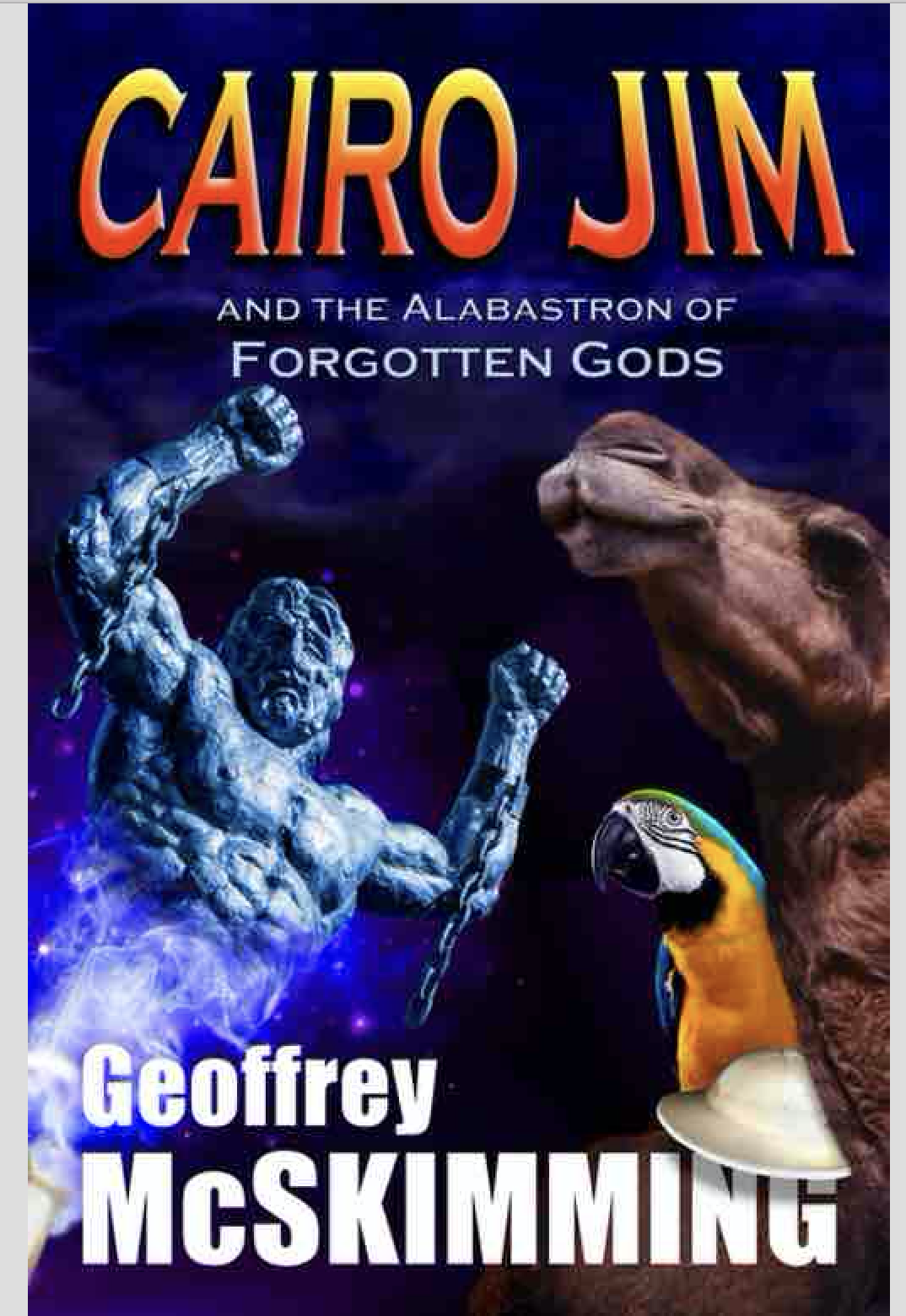Title of the work
Country of the First Edition
Original Language
First Edition Date
First Edition Details
Geoffrey McSkimming, Cairo Jim and the Alabastron of Forgotten Gods. Rydalmere, N.S.W.: NSW Starlight, 1996, 237 pp.
ISBN
Official Website
cairojim.com (accessed: August 2, 2018)
Genre
Action and adventure fiction
Fiction
Humor
Magic realist fiction
Novels
Target Audience
Children (ages 9–14)
Cover

Courtesy of © 9 Diamonds Press.
Author of the Entry:
Ben Gooley, University of New England, ben.gooley@une.edu.au
Peer-reviewer of the Entry:
Elizabeth Hale, University of New England; ehale@une.edu.au
Daniel A. Nkemleke, University of Yaounde 1, nkemlekedan@yahoo.com

Portrait of Geoffrey McSkimming, courtesy of © 9 Diamonds Press.
Geoffrey McSkimming
, b. 1962
(Author)
Geoffrey McSkimming is an Australian writer of children’s fiction and poetry, best known for his Cairo Jim series. Born in and a resident of Sydney, Australia, he has travelled widely in researching his novels. McSkimming is married to Sue-Anne Webster, a professional magician. He is employed on the staff of The School Magazine, the oldest continually published magazine in Australia and the longest running literary magazine for children in the world (published since 1916). Some of his Cairo Jim and Jocelyn Osgood books have been published in many different languages. His writing is comedic and features frequent wordplays and occasional high-level vocabulary for books aimed at the children’s market.
Source:
Official website(accessed: August 4, 2017).
Bio prepared by Ben Gooley, University of New England, ben.gooley@une.edu.au
Adaptations
Available as an audiobook through Bolinda Audio, read by Geoffrey McSkimming, 2003. ISBN: 1740933281, playing time, 5 hours 15 minutes.
Translation
Japanese: Kairo Jimu: 4, Wasurerareta girisha no kamigami to nazo no tsubo, trans. Shiori Okusawa, Tokyo: Randamuhausu kodansha, 2009.
German: Cairo Jim Und Die Vergessenen Götter, München: Omnibus, 2003.
Summary
Cairo Jim is a young archaeologist who is already an established member of the fictional Old Relics Society at the commencement of the series. He is always seen wearing a pith helmet and his desert sun-spectacles. Cairo Jim and the Alabastron of Forgotten Gods is located in mid-to-late 20th-century Greece, moving from Athens to Delphi to Samothrace (Samothraki). It is a whimsical adventure in which the hero and his companions (a talking macaw named Doris and a telepathic wonder-camel named Brenda) work with museum curator Euripides Doodah of the National Archaeological Museum of Greece to stop the villainous Captain Neptune Flannelbottom Bone and his companion crow Desdemona from opening the sacred alabastron of Cronos, which they have stolen from the museum. Captain Bone and Desdemona are the usual antagonists throughout the Cairo Jim series.
Captain Bone plans on opening the alabastron in which the Titans were imprisoned by Zeus, and so be granted deification as his reward. To this end Captain Bone retrieves an altar from Delphi, and also uses the power of the alabastron to enliven a statue of Herakles and the statue of the Naxian Sphinx. With these, they travel to Samothrace to enact the opening ceremony, pursued by Cairo Jim’s company (who catch a ferry named The Spirit of Nike). On Samothrace, Brenda sees a centaur (showing that incidental mythical elements appear in the work). The company is unable to stop Captain Bone from beginning his rituals. As Captain Bone is about to open the alabastron, he is stopped by the Winged Victory of Samothrace who has flown there from the Louvre, along with other classical statues which have magically returned to Greece from around the globe. The Naxian Sphinx turns on Captain Bone and flies him out to sea.
Analysis
Cairo Jim and the Alabastron of Forgotten Gods is richly imbued with references to classical figures and themes. The world of Cairo Jim is one in which the world of ‘historical fact’ and the "mythic world" weave together so that the mythic and magical tropes work their way into the contemporary world in various ways throughout the book. Although the stories are not clearly dated, their use of plane travel locates them in the second half of the 20th century. As an archaeological adventure story, the Cairo Jim series sees possible influence from the Indiana Jones stories, although Cairo Jim is less swashbuckling. Although we do not explicitly meet the Titans or the Greek Gods themselves in this book, the narrative of their ancient war provides the backdrop against which the story runs.
The story moves from Athens to Delphi to Samothrace, providing strong physical loci for the classical and mythic elements to emerge. The statue of Herakles and the statue of the Sphinx of the Naxians are active characters at points in the plot, as is Nike, appearing as the Winged Victory of Samothrace.
The milieu in which the world of Cairo Jim functions is one in which myth is merely faded reality, which can be tangibly linked with the present through some object or totem. In this way, the books often function as a limited form of portal fantasy. Although all the major characters are adults, the frequent whimsical wordplay, talking animals, and the classical and adventure themes make the books appealing to children.
As Euripides Doodah concludes towards the close of the book: “history is not something to only keep locked away in museums and sunless places. I have discovered, with your help of course, that history is alive.”
Further Reading
Saxby, Maurice, Books in the life of a child: Bridges to literature and learning, South Melbourne: Macmillan Education Australia, 1997, pp. 238, 314.


